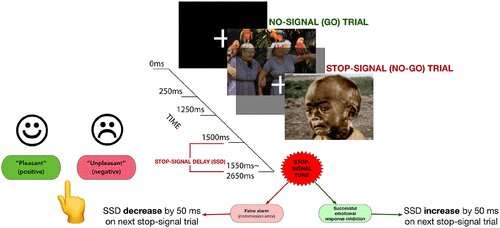
If you can’t stop saying or doing things that you later regret, here’s a diagnostic test for you: UC Berkeley researchers have pioneered a way to better determine when acting on one’s worst impulses verges on pathological.
Turns out, acting more recklessly when your emotions run high can be correlated with how fast you react to stimulating visuals, especially disturbing ones, according to the findings recently published in the online edition of the journal Brain and Neuroscience Advances.
Researchers at UC Berkeley and Harvard University, among a few other institutions, sought a new way to evaluate “negative urgency,” a clinical form of impulsivity that is linked to depression, obsessive compulsive disorder, eating disorders, self-harm, bipolar disorder and ADHD.
Negative urgency is traditionally measured with a self-report questionnaire, but to provide a more reliable measure, researchers developed what they call an “emotional stop-signal task.”
“This new measure is exciting because it provides a more objective way to assess negative urgency, which predicts mental problems,” said study co-lead author Sheri Johnson, a UC Berkeley professor of psychology.
The emotional stop-signal task was carried out by 450 study participants, including 150 psychiatric patients. They viewed on a computer screen a mix of comforting and disturbing photographs, such as children playing with kittens and an emaciated famine victim, then rated each picture by hitting either a “positive” or “negative” button.
Every so often, an upsetting picture was followed by a “stop” signal to keep study participants from reacting. Those whose self-assessment signaled poor impulse control were so fast on the trigger that they frequently reacted to the photo even before the stop sign appeared.
“The results suggest that some people have more trouble controlling impulses that are driven by negative emotions. This is significant because, in a worst-case scenario, negative emotion-related impulsivity can lead to extreme behaviors like self-harm and suicide,” said study co-lead author J.D. Allen, a visiting scholar at UC Berkeley and a researcher at Oberlin College and Conservatory in Ohio.
The standard measure to screen for negative adversity is the UPPS-P Impulsive Behavior Scale, which gauges such traits as acting without thinking, a lack of perseverance or focus, and the tendency to seek out novel and thrilling experiences.
While impulsivity is often associated with being fun and spontaneous, it can also veer into reckless or destructive behavior toward oneself or others. It can also be challenging to determine when poor impulse control is age-appropriate and healthy versus a possible sign of mental illness, especially among young children.
“It’s normal to cry when you’re sad or to raise your voice when you’re angry,” Allen said. “But if a person can’t stop crying once they start, or throws tantrums and gets aggressive, this may be a warning sign of underlying vulnerability to psychiatric problems and accompanying behavioral issues.”
How they conducted the study
For the study, 450 adults were recruited from universities and their surrounding communities, as well as from psychiatric inpatient units. They filled out the UPPS-P Impulsive Behavior Scale to rate themselves on negative and positive urgency. Next, they viewed a fast-moving series of photos on a computer screen and categorized each image as either positive or negative.
When faced with unpleasant images, participants who scored highly on the negative urgency scale had more difficulty keeping their finger off the button, even when a stop button appeared.
To test the task’s reliability over longer periods of time, 61 psychiatric patients took it twice, once while hospitalized and again, up to six months later, after being released. Their results remained consistent, indicating the stability of the test protocol.
Allen and Johnson hope their work will lead to new ways to assess risk for mental illness and pave the way for new treatments. They also would like to see the evaluation eventually used in schools to catch potential psychiatric disorders early.
Source: Read Full Article
